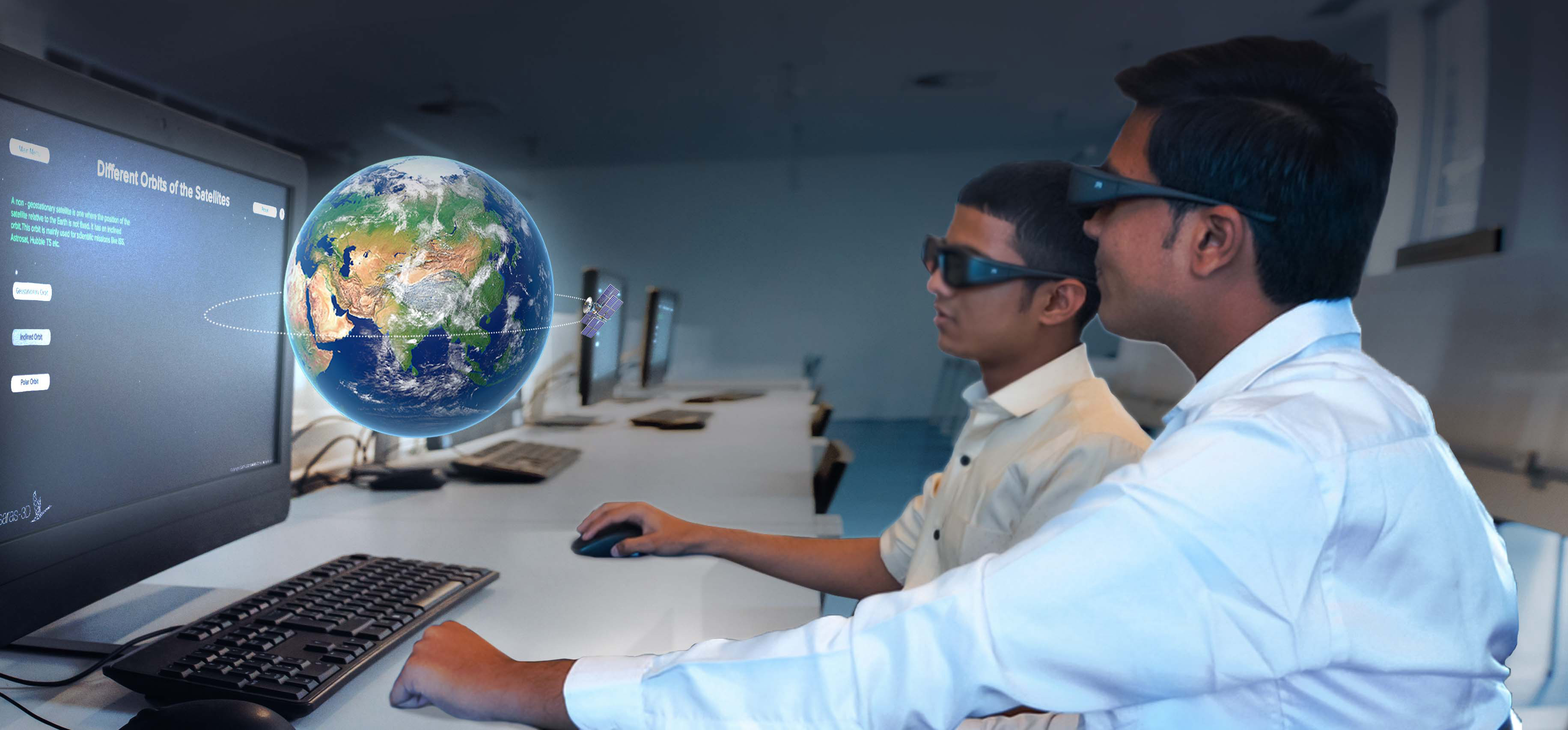BLOGS
At Saras, our mission is to ensure that all the students are given an opportunity to reach their full potential. We are passionate about creating and encouraging tomorrow’s innovators and problem solvers and make high quality education available to all.

Stereoscopic 3D Learning - A Shift in Education
The Early Days of Stereoscopy
Virtual reality, as we know, can be traced back to the 19th century, when Sir Charles Wheatstone invented a device named the stereoscope to display three-dimensional images from flat images using small changes in angle. Stereoscopy preceded the invention of photography, so Wheatstone used his stereoscope with drawings. Shortly after, Sir David Brewster further improved the innovation by developing the first portable 3D viewing device, which provided viewing experiences people never before had access to. Since then, innovation has snowballed, and we are now in an era of virtual reality, bringing engaging experiences to each other, no matter where we are.
When the Covid-19 Pandemic hit
The onset of the Coronavirus pandemic in 2020 created a lot of turmoil in students and teachers as they had to study and teach from home, respectively. Although many digitized education platforms had established their place by then, they did not fulfill the engagement needs of real-life experience. As the engagement levels and comprehension in students waned, there was a lack of confidence about their futures. Their career goals lacked focus or clarity. Many students reported feeling discouraged as exams were postponed and study materials were passively posted online.
Moreover, students needed proper internet connectivity, which limited access to only those children whose families could afford it. The ‘Remote Learning Reachability Report 2020’ of UNICEF showed that only 24 percent of Indian households had an internet connection to access e-learning. Even those who had reliable internet connectivity could not fully align with studies due to the tediousness of passive learning at home. A shift in learning was called for, wherein both students and teachers could engage in online experiences that teach through experiences that mimic real life.
Scientific View On 3D Learning
We now see why online learning during the pandemic was not as successful as we collectively hoped. The passive nature of conventional online learning does not fully activate the brain. The human brain, of course, has two sides: the listening and analyzing tasks occur in the left hemisphere, while visual and spatial activities take place in the right one. When students learn through hands-on interaction with 3D models or simulations, both sides are more finely engaged than in usual 2D learning. Layering a mix of learning styles helps the brain to create more powerful associations and collect more knowledge.
Brain scans have also concluded that when children recall or think about past hands-on experiences, their brain’s sensory operations and motor areas get a boost. Interacting with objects gives students a greater depth of understanding than passively reading about the topic. As they practice and learn through 3D simulations more and more, their recall power grows stronger.
Stereoscopic 3D Learning - Bridging The Gap
As the pandemic highlighted the vast gaps in how students learn, technological shifts in learning empowered them to go beyond the conventional methods. They no longer need to rotely memorize theoretical knowledge without understanding what it really means. By integrating virtual reality into the learning experience, it is like students are experimenting in a real-life laboratory where they can fully engage as they explore and thoroughly learn every topic.
Simulations and hands-on interaction with 3D objects allow students to play with scaled models and immerse themselves into each concept. Topics are shown as if viewing them in real life. They can rotate and explore them through different angles and directions to get a complete look. This way, they can dive deep into every topic and gain proper understanding instead of imagining and memorizing rotely. Mistakes or doubts no longer prevail as these experiences seamlessly imprint the information.
These blended techniques are also empowering teachers to explain difficult concepts in more concrete ways. Such gamified experiences energize both a student’s and teacher’s senses as they can freely and thoroughly experience the topic, while also having fun through playing with 3D objects.
3D Learning In-Classroom Case Study
The Saras-3D team conducted Science and Math experimental tests for 24 10th-standard students at a school in Gujarat. The results showed a tremendous difference in the test scores with and without 3D learning. While around 38% of students scored under 35% marks in Math without 3D learning, approximately 8% of students scored under 35% after experiencing 3D learning.
Moreover, without 3D Math, no student could achieve more than 80% marks. However, after learning in 3D, 29% of students achieved a higher than 80% score. Science subject tests also showed significant improvement in their scores. These results show that hands-on experience with concepts boosts students’ performance.
Conclusion
When Sir Charles Wheatstone invented the stereoscope, he likely did not imagine it could morph into a virtual reality experience that could transform the way students learn. By thoroughly engaging students, the 3D learning experience has the power to help them fall in love with learning and achieve their goals.
BACK